
The last four decades of the nineteenth century were a time of great learning in regard to metallic cartridges and their rifles. Prior to that, most rifled barrels were not meant for bullets – as in elongated projectiles. Most civilian rifles were muzzleloaders shooting round balls, or in military usage, muzzleloading rifle-muskets that shot Minié balls. Those firearms were rifled with very slow rifling twists, often as slow as 1:72.
Nowadays, we speak of certain weights of bullets requiring certain rifling twists. An example is a box of Sierra .224-inch, 80-grain HPBTs stating on the label that barrels with 1:7 to 1:8 twists were needed. Actually, our modern method is slightly incorrect, as it is not the weight of the bullets that require certain rifling twists, but their lengths. In fact, in its 1870’s packaging of ammunition for Sharps rifles, the Union Metallic Cartridge Company included bullet length on its labels. For example, a 550-grain .45 bullet was 113⁄32 inches in length. A .44 bullet of 500 grains was 13⁄8 inches long.
This story is from the {{IssueName}} edition of {{MagazineName}}.
Start your 7-day Magzter GOLD free trial to access thousands of curated premium stories, and 9,000+ magazines and newspapers.
Already a subscriber ? Sign In
This story is from the {{IssueName}} edition of {{MagazineName}}.
Start your 7-day Magzter GOLD free trial to access thousands of curated premium stories, and 9,000+ magazines and newspapers.
Already a subscriber? Sign In
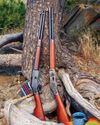
CIMARRON .32-20 Short Rifle & Carbine
In the heyday of Winchester Repeating Arms Company lever guns, it offered muskets, standard rifles, short rifles and saddle ring carbines.
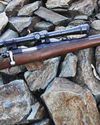
Remington's Model 722 and .222 Cartridge
It's easy enough to define what a varmint is, those pesky critters that tear up pastures, flower beds and all kinds of expensive crops people need for various reasons - most importantly, to make a living and/or something with which to feed themselves.

Coyote Bullets
What is Best for You?
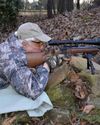
Remington's 5mm Rimfire Magnum
Shooting a Classic
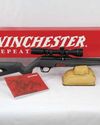
Winchester's New Wildcat
The Ultralight Rimfire Varmint Rifle

.223 Remington from .30-30 Winchester?
Multitasking for Varmints

LOADS FOR A .22 TCM
The .22 TCM first appeared commercially in 2012, chambered in a Rock Island Armory 1911-style handgun.
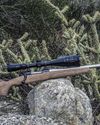
Everybody Loves Velocity
The 4,500-fps WSSM Project

A BOLT-ACTION FRANCHI 224 VALKYRIE
Testing New Loads
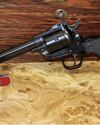
.22 Winchester Magnum Rimfire
Shooting Revolvers